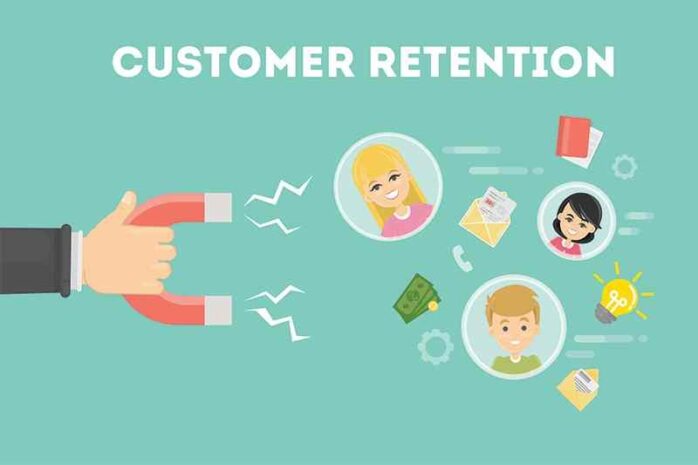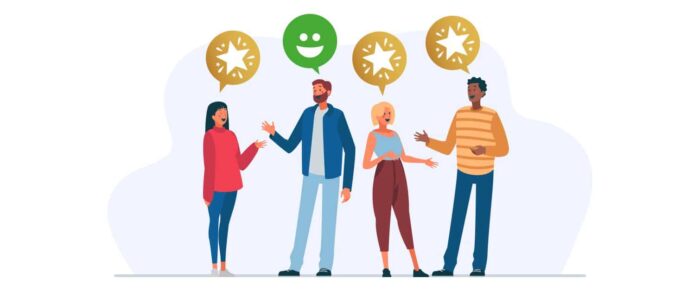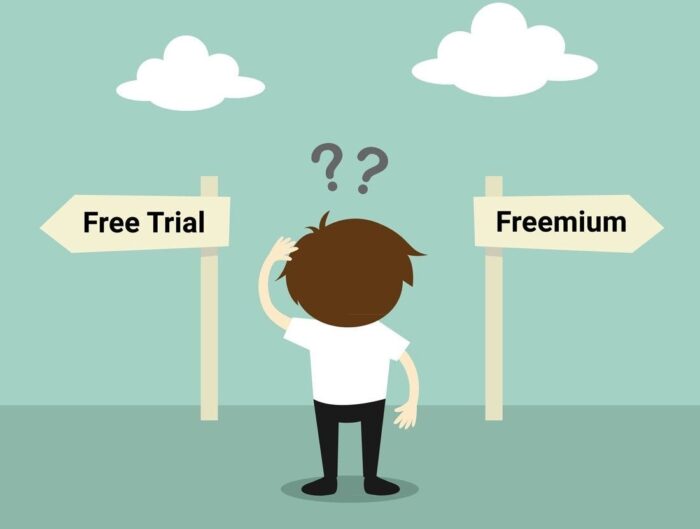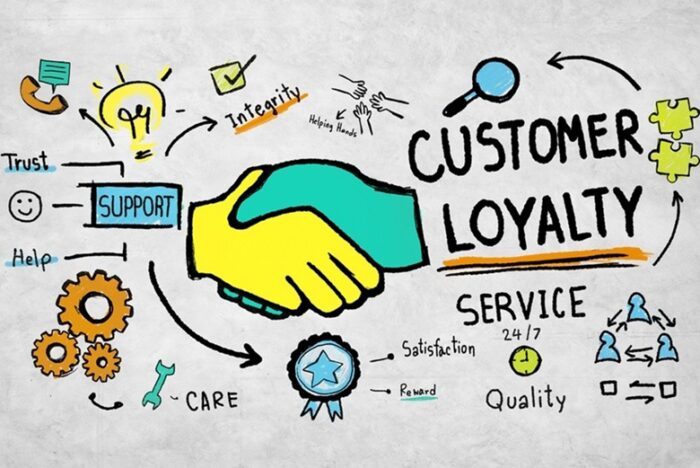
Customer retention means keeping customers coming back instead of choosing another company. It shows how good a product or service is and how loyal customers are. To achieve good retention, companies need to make it hard for clients to switch, offer valuable products or services, meet customer expectations, and enhance the overall experience. It’s about combining these elements to build strong connections with customers, making them stick around and stay loyal to the brand.

Benefits of Customer Retention
Investing in keeping current customers brings many benefits that go beyond just making money quickly. Here are some important reasons why businesses should focus on keeping their current customers:
More Money
Loyal customers are more likely to buy again and spend more each time. Studies say that if client retention goes up by just 5%, profits can go up by 25% to 95%.
Saving Money
Getting new customers can be up to five times more expensive than keeping the ones a business already has. Keeping clients usually needs less advertising and saves a lot of money over time.
Good Word-of-Mouth Marketing
Happy clients talk about a brand. They’re more likely to tell their friends and family about a product or service, which helps the brand grow without spending a lot on advertising.
Long-term Value
Customers who stay with a brand for a long time are more likely to become loyal, long-term clients . This gives the business a steady stream of money that can help it during good and bad times.
Better Brand Reputation
Companies that focus on keeping customers happy usually have a better name in the market. A good brand image can bring in new clients and partners.
By understanding what is customer retention, businesses can weave a narrative of enduring connections and trust, bridging the past and the digital age.

Loyalty Spectrum
In the realm of business success, the interplay between customer loyalty and retention forms a powerful dynamic. At the pinnacle of this symbiotic relationship stands loyalty — the coveted state where clients consistently choose one brand over others. Supporting this pinnacle is the foundational aspect of retention, showcasing the strategies that businesses deploy to keep customers coming back. Together, these elements construct a spectrum, with loyalty as its zenith and retention forming the sturdy base.
When clients ponder over companies they genuinely admire, a myriad of emotions may surface. Unfortunately, many businesses find themselves at a considerable distance from their customers, resulting in an unsettling sense of indifference. The loyalty spectrum, segmented into three categories (80%, 15%, and 5%), provides insightful perspectives into this intricate landscape.
Service Segment
At the spectrum’s base lies the Service segment, populated by most companies striving for customer loyalty. These entities predominantly vie for customer favor through service offerings, yet they often appear interchangeable. The connection established is transactional and convenience-driven. Geico exemplifies a company in this segment, with clients primarily choosing based on price. However, the transactional nature makes these clients susceptible to defection if a competitor offers a more enticing deal.
Value Category
Above the Service segment emerges the Value category, housing companies that lead with corporate values aligned with their customers. Businesses comprehending the essence of customer retention wield a more profound impact, earning genuine favor from clients . Companies in this category differentiate themselves by resonating with clients values. Southwest Airlines transitioned from the Service segment to the Value category by realigning its corporate values, experiencing improved customer retention and increased lifetime value.
Interpersonal Relationship Zone
At the spectrum’s summit, the Interpersonal Relationship zone stands as a pinnacle of deep, personal connection that transcends service and shared values. Customers engaging with companies in this zone sense a substantial stake in the relationship, fostering enduring loyalty. Apple epitomizes this zone, where customers not only appreciate the products but also cultivate emotional connections with the brand. This level of attachment goes beyond transactions, solidifying enduring and meaningful customer relationships.
Understanding the nuances of each category in the customer loyalty spectrum provides businesses with a strategic framework to navigate the complex landscape of customer relations and build lasting connections.

Expanded Retention Strategies
Losing a customer isn’t just a missed opportunity; it’s a loss in the investment and collective team efforts dedicated to acquiring them. A profound understanding of retention is fundamental, requiring businesses to establish a comprehensive strategy that not only retains clients but significantly contributes to sustained business growth.
Elevated Personalized Experiences
Take personalization to the next level by utilizing personalized emails, product recommendations, and precisely tailored marketing messages. Amazon, a prime example, goes beyond by suggesting related products, creating a personalized experience that elevates customer retention to new heights.
Exceptional Customer Service Amplified
The cornerstone of customer retention lies in exceptional customer service. Beyond merely responding promptly, actively listening to concerns, and swift issue resolution, the emphasis should be on elevating the entire service experience to create a lasting impression.
Enriched Loyalty Programs
Loyalty programs should go beyond the standard and be enriched with innovative approaches. Utilize points, discounts, or tiered rewards, as seen in Starbucks’ loyalty program, where free drinks and personalized discounts not only retain customers but actively encourage continuous patronage.
Heightened Continuous Engagement
Maintaining regular contact is essential, but to elevate customer engagement, the focus should be on heightened interaction through multifaceted channels. Incorporate diverse means, such as impactful email newsletters, dynamic social media interactions, and value-added content that goes beyond the ordinary.
Empowered Data-Driven Insights
The true power of data-driven insights lies in their ability to shape a profound understanding of clients behavior and preferences. Businesses should leverage advanced data analytics tools and customer feedback to not just understand but proactively influence satisfaction and loyalty.
Optimized Feedback Loop
Ensure the customer feedback loop is optimized to not just gather insights but to actively enhance the user experience. The initial impression is crucial, and streamlining the feedback loop ensures continuous improvement for sustained clients retention.
Augmented Freemium and Free Useful Tools
The freemium model can be augmented by providing even more value with high-quality free products or useful tools alongside premium features. Slack’s free version, with its enhanced capabilities, becomes a potent tool for user retention and satisfaction.

Customized Product Tailoring Expanded
Empower customers to not just customize but deeply tailor products according to their preferences. Research indicates a strong preference for personalized products, and businesses should capitalize on this by offering customization options that exceed expectations.
Streamlined Payment and Sign-Up Process
The emphasis on seamless user experiences should extend to the payment and sign-up processes. Streamlining these processes, offering diverse payment methods, and ensuring heightened security contribute significantly to overall user convenience and retention.
Fortified Security Prioritization
Security is paramount, and businesses should go beyond standard measures. Integration with reputable payment systems, transparent refund policies, and implementing advanced security measures like multifactor authentication all contribute to building and reinforcing trust.
Advanced Reminders and Diverse Payment Options
Enhance customer experience by implementing advanced reminders before billing cycles. Additionally, provide an array of payment options, incorporating digital wallets alongside traditional methods to ensure user flexibility.
Enriched Content Creation
Content marketing should not only provide valuable information but should be enriched to create immersive experiences. Consider diversified content formats like webinars, tutorials, and case studies to highlight a product’s potential value and demonstrate expertise.
Deepened Analysis of the Customer Journey
The study of the customer journey should evolve from basic comprehension to a deep understanding. Advanced analytics tools should be employed to track user behavior comprehensively, enabling businesses to optimize every stage of the customer journey for enhanced conversion rates.
Personalized Sales Propositions Elevated
Personalized recommendations should not be limited to basic interests but should be elevated using advanced data and user tracking. Implementing a recommendation engine that offers truly personalized suggestions based on a user’s complete browsing and purchase history enriches the overall shopping experience.
Advanced Upselling and Cross-Selling Strategies
Take upselling and cross-selling to a strategic level by employing advanced strategies that suggest more expensive or premium options based on a nuanced understanding of customer needs. Bundled packages and complementary product showcases during the checkout process become more sophisticated and effective.
Elevated Discounts and Promotions
Go beyond standard discounts and promotions by introducing innovative incentives. Limited-time promotions, exclusive loyalty programs, or enticing discounts on the next purchase create a sense of exclusivity and encourage customers to return actively.
Expanded Free Offerings
Generosity in free offerings should be expanded to include not just trials but additional perks. Providing a free trial period for premium features or including a meaningful gift with a purchase adds an extra layer of enticement, fostering loyalty from the very beginning.
Advanced Implementation of Referral Programs
Referral programs should be elevated to a more sophisticated level. Implementing a referral system where both the referrer and the referred customer receive advanced incentives, such as substantial discounts or exclusive credits, not only grows the customer base but actively nurtures brand advocacy and loyalty.

Building Customer Loyalty Takes Time, But You Can Do It
Improving customer retention doesn’t happen in one click, but with some smart strategies, you can bring your existing customers back for more.
Take time to know your customers. Find out what they like, what they need, and where they face challenges.
Keep your customers engaged by surprising them, making their experience delightful, and motivating them. Reach out, ask for feedback, testimonials, and let them know you value their support.
Regular communication is key. Keep in touch through emails, newsletters, or social media. Strengthen the relationship by staying connected.
Utilize tools to test different strategies. The more you test, the better your customer retention program becomes.
Remember, patience is key. By understanding your customers, making their experience positive, staying connected, and testing your strategies, you’ll build lasting relationships with your customers.











